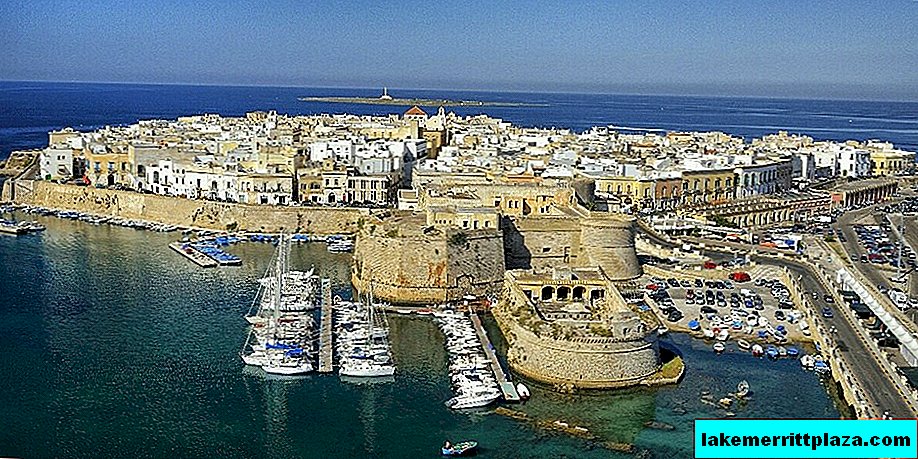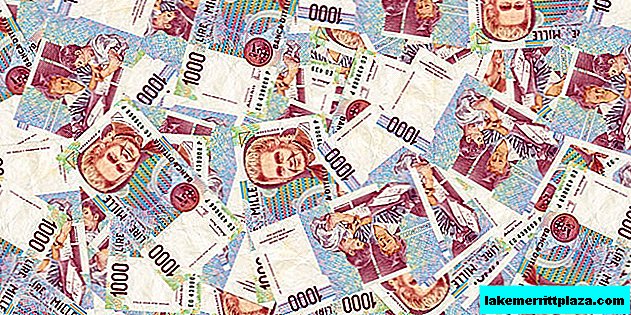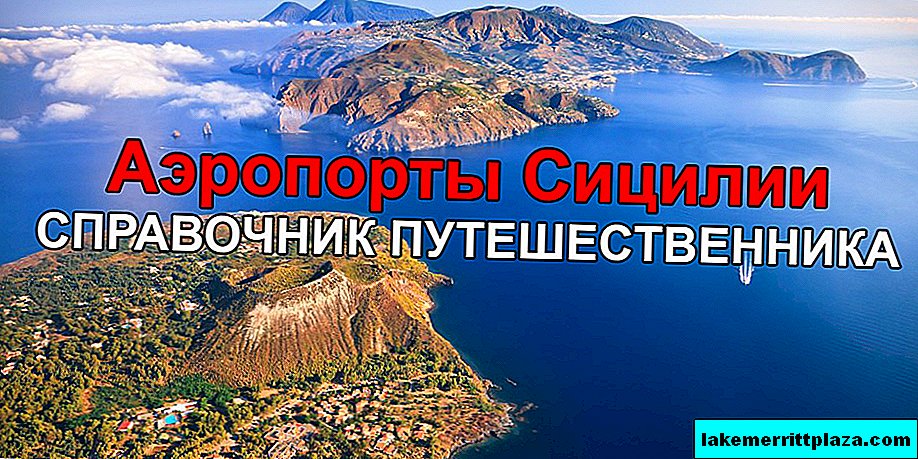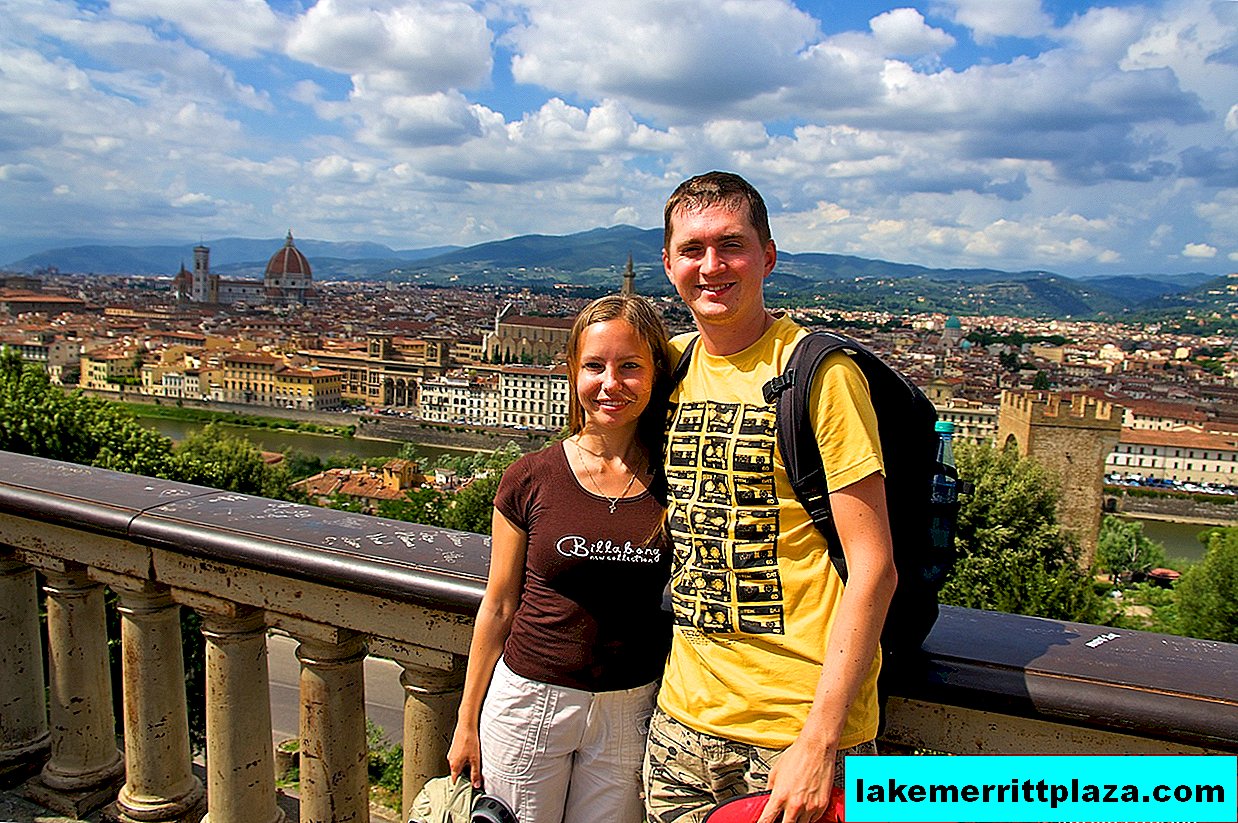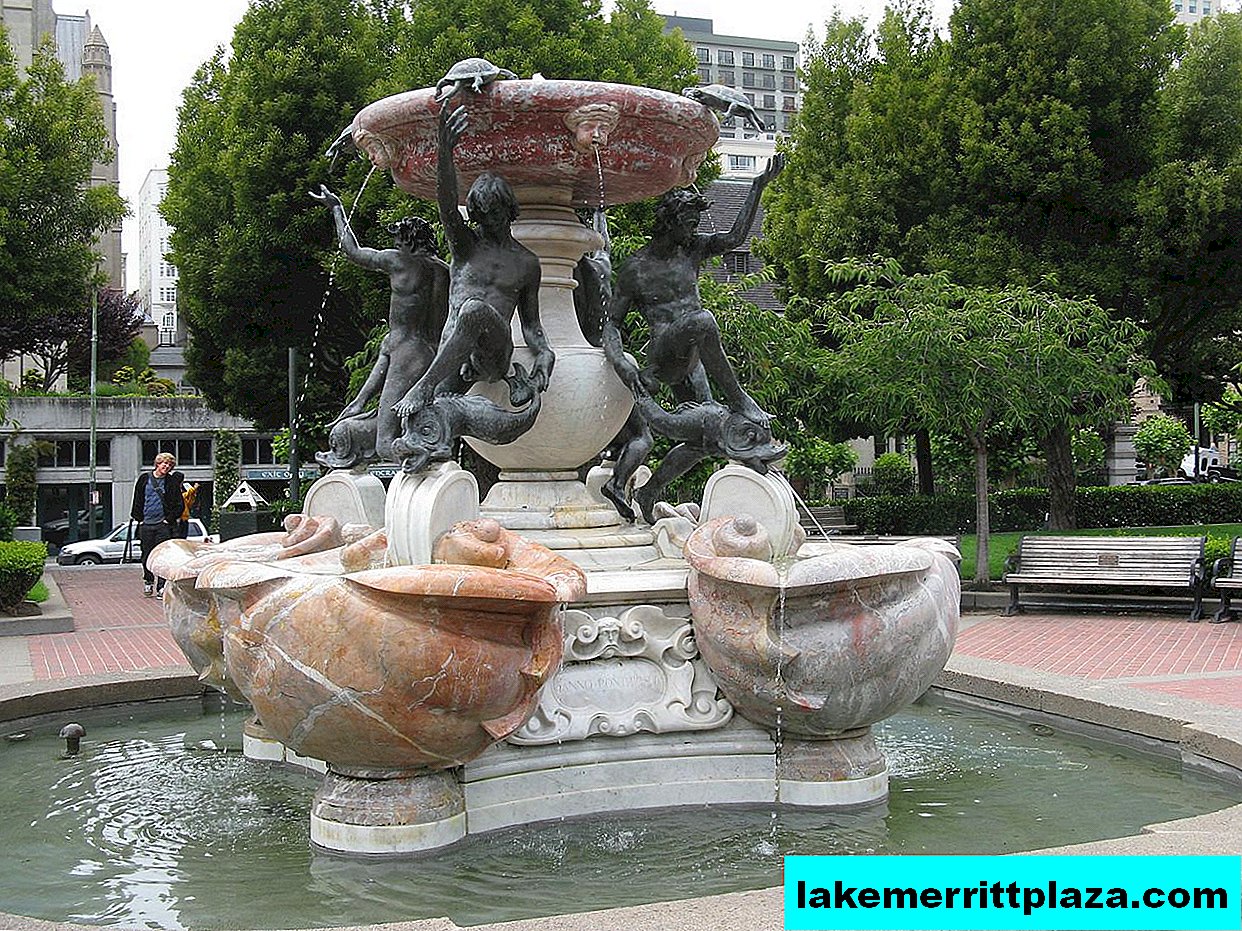Never before in history has mankind eaten as much meat as it consumes now. The number of livestock is growing every year. But the amount of food eaten is not an indicator of living standards. The quality of meat products is the main goal of bona fide producers. Italian Pancetta (Pancetta) - a true example of a perfect product - This is an Italian version of bacon, that is, it is prepared from pork belly. There are different types of pancettas, two of which are categorized as DOP. But not all of its varieties are similar in appearance to their American cousin. We will tell you what pancetta is now.
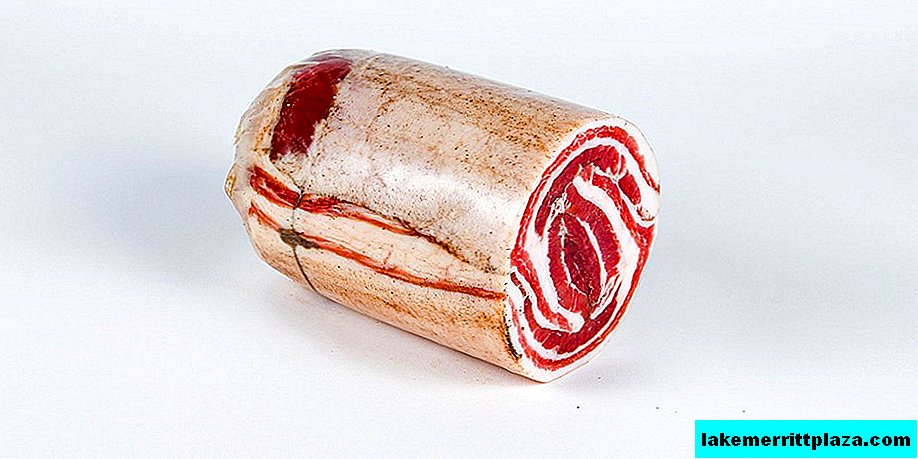
Origin and variety
Preservation of meat products using the methods of salting and curing in Italy dates back to 900 BC Therefore, presumably, the first versions of the pancetta appeared precisely in those years. In the diet of Roman legionnaires, such a dish was present every 3 days.
Like many other gourmet products, Pancetta has long remained the prerogative of the wealthy. Only with the start of technological progress and the launch of mass production of meat products at the beginning of the XX century it became available to most people.
Today there are 3 varieties of pancetta according to the method of preparation:
- Pancetta Tesa is a flat-shaped product like bacon.
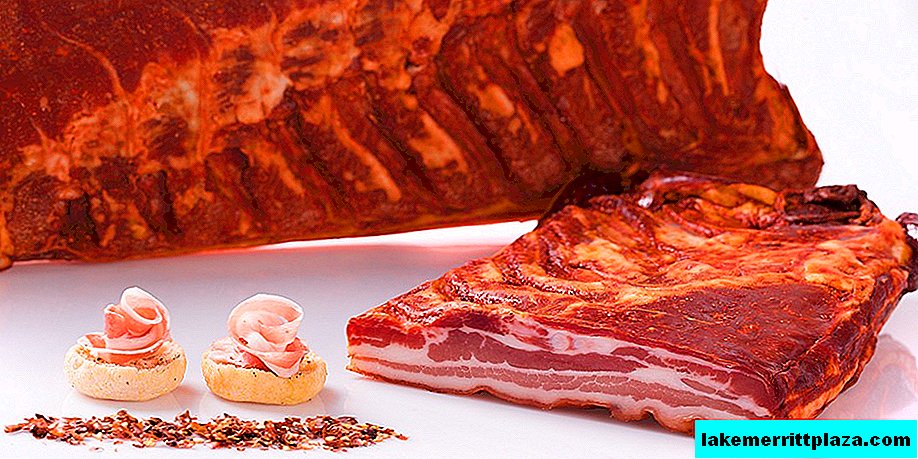
At the first stage, it is sprinkled with a mixture of salt and spices and left alone in the cold for even distribution of spices in the meat, periodically rubbing with white wine. After this, the product goes through a drying process in special rooms for a period of 3 to 5 days. The subsequent ripening period lasts at least 2 months. The slice has a characteristic alternation of bright red and white layers. - Pancetta Arrotolata (Pancetta Arrotolata) - meat product in the form of a roll.
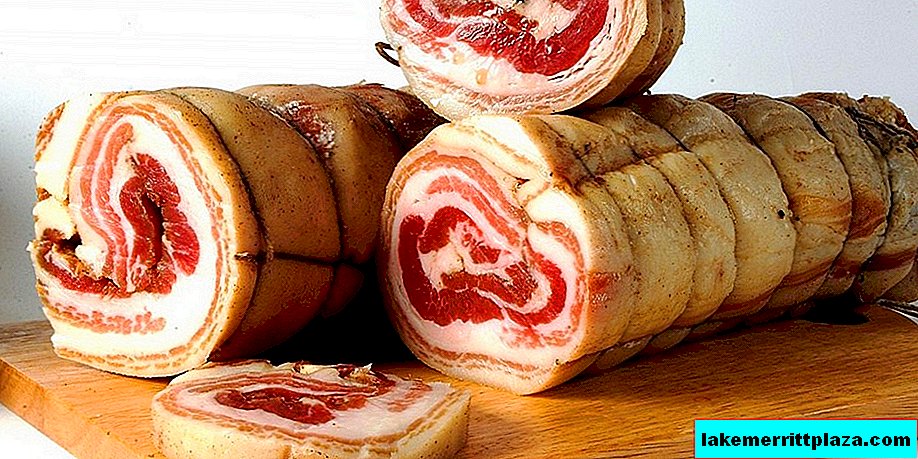
It is wrapped so that spices and herbs are inside the product. Usually covered with genuine leather. For its production, less fatty raw materials are most often selected, and therefore red layers of meat predominate on the cut. The process of salting takes place in special bathtubs in the refrigerator and lasts about a month. The duration of the subsequent stage of maturation depends on the diameter of the product and varies from 2 to 4 months - Pancetta Coppata is a product that is a symbiosis of two types of products: pancetta and koppa.
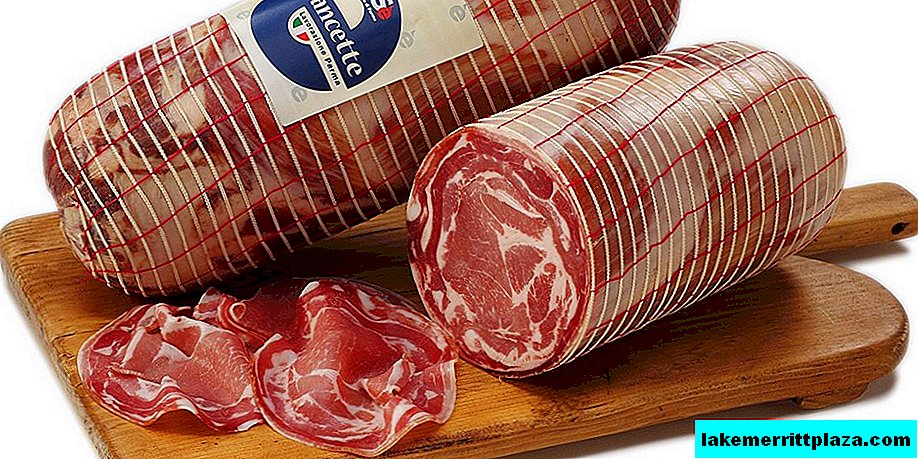
For its production, diet meat from the neck of the pig is wrapped in brisket. A distinctive feature of this variety of pancetta is that the slice is almost completely represented by the meat part, and the white strips of fat are thin and their amount is minimal (in comparison with other types).
There are variations of pancetta that do not need long-term ripening, and come to the market fresh:
- Affumicata - pancetta with skin smoked in special ovens. Closest to American bacon.
- Cubettata is a skinless pancetta that has gone through salting and drying for 15 days. It is cut into small cubes, packaged and sent for sale.
Some pancetta varieties have been praised by the European Union and have been awarded the DOP category. In 1996, Pancetta Piacentina (Pancetta Piacentina), and in 1998 - Pancetta di Calabria (Pancetta di Calabria), received this honorable "award".
Pancetta di calabria
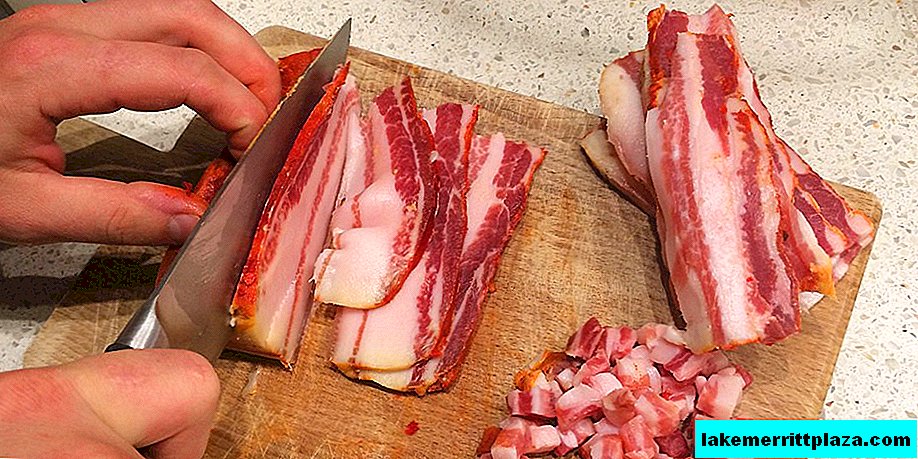
Pancetta di Calabria is a product whose entire production cycle, starting from raising pigs, takes place in Calabria. A brisket with a rectangular skin and weighing 3-4 kg is salted for 4-8 days. Then it is washed and moistened with wine vinegar. Sprinkle the surface with a little chili pepper. This is followed by a maturity period of at least 30 days in rooms with controlled temperature and humidity.
The finished product has a thickness of 3-4 cm. The surface color is red, the cut is pink with alternating white layers of fat. The taste is pleasant, intense. The top is a little sharp due to the use of chili peppers. It is sold both by weight and in sliced form in a vacuum package.
Pancetta piacentina
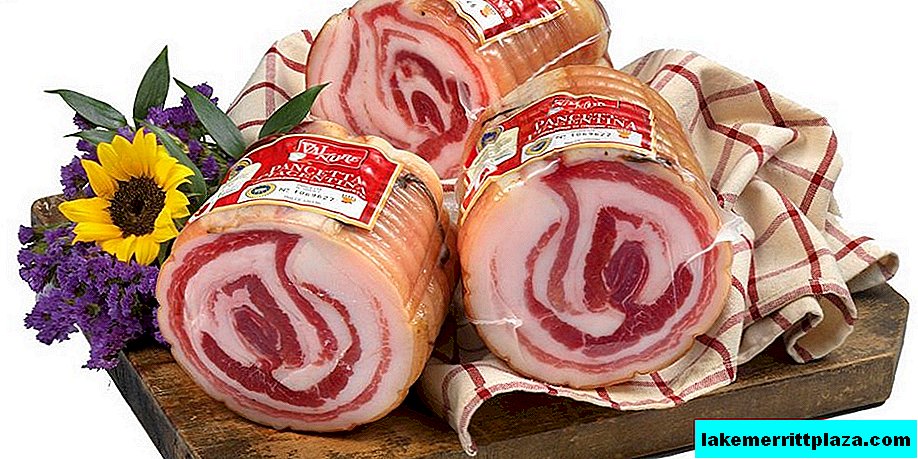
Pancetta Piacentina is a meat product, produced in the form of a roll, typical of the province of Piacenza of the Emilia-Romagna region. The weight of pigs for its production must be at least 160 kg. For salting use salt, sugar and seasonings (black and white pepper, cloves). Acceptable use of nitrates and sodium nitrites in scanty amounts (not more than 10 g per 100 kg of raw material). The prepared brisket is scraped off from the remnants of spices, rolled into a roll and placed in a natural shell. The product is dried at a temperature of 15-25 degrees for about a week. The ripening stage lasts at least 4 months.
The form of the finished Pancetta Piacentina is cylindrical, weight from 4 to 8 kg. The color of the cut is bright red with a splash of white fat. A pleasant aroma with notes of fruit. The taste is sweet. Sold by weight or chopped in vacuum packaging.
Unlike Bacon
The use of the names "bacon" and "pancetta" can often be seen as synonyms, but, in fact, there are a number of significant differences:
- For the production of pancetta they use raw materials taken exclusively from the pig’s stomach, while bacon does not have such restrictions. For him, not only the brisket is used, but also the back, neck, and thigh.
- Bacon, as a rule, does not go through the ripening stage. It is smoked or baked in an oven and sent for sale. For pancetta, drying is an integral part of cooking. Smoked Italian brisket is a fairly rare occurrence, mainly found in the Trentino-Alto Adige region.
- Fat layers often prevail in bacon, in contrast to more lean pancetta.
And finally, this is a difference in the home territories, which has a huge impact on the specific taste of the product. If pancetta is a true Italian product, then bacon is characteristic of the entire Anglo-Saxon world.
Homemade recipe
Pancetta at home is quite simple to prepare. But, it is worth noting that the output nevertheless turns out, rather, a brisket cooked in Italian. You can taste the product with the taste of Italy only in the republic.
- Pork belly - 1 kg;
- Coarse salt (preferably sea) - 250 g;
- Ground black pepper - 3 tsp;
- Ground green pepper - 1 tsp;
- Brown sugar - 1 tsp;
- Garlic - 1 tsp;
- Coriander seeds - 1 tsp;
- Paprika - 1 tsp;
- Rosemary - a pinch;
- Thyme - a pinch;
- Bay leaf - 1 pc.
The first step is to prepare the spices. To do this, mix everything in a mortar and grind with a pestle. Next, put the bacon on a cutting board and rub it thoroughly with seasonings. Lubricate the entire surface, including the sides. Then we fill it with salt in such a way that a layer of about 1 cm is formed. So the excess liquid goes away faster and the conservation process begins.
We put the future pancetta in the refrigerator under a slight slope. From below, we must put a container to collect the flowing liquid. We keep the product for at least 5 days. During this time, its height should decrease by a third. Then we make a hole and hang the brisket in a dark cool place (for example, in the cellar) for a week. To protect against insects, you can put on a big bag.
After a week, wash the pancetta under the tap from the remains of salt. Instead of water, vinegar or wine can be used for this. Dry well and lubricate with an identical mixture of spices. Suspend again in a cool room for 2 weeks. At the output we get the most delicious pancetta tesa, completely ready for use.
Recommendations
When meeting new recipes, housewives often have a lot of questions. In the recommendations, we tried to take into account all the nuances of cooking Italian pancetta in Russian fashion:
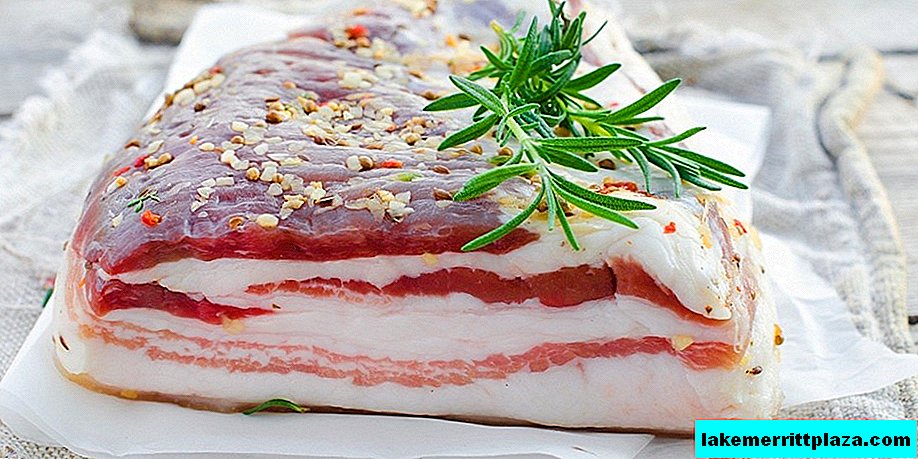
- When choosing a brisket, you don’t need to take a piece too thick, otherwise the ambassador will not go fully. In the ratio of meat and fat parts, stop at the golden middle of 50 to 50.
- It is desirable that the future pancetta was with skin. It helps to keep the shape of the product.
- You can add the ones you prefer to the spice mix. For example, some supplement spices with red pepper, others with dill seeds. Their number is also not constant, and it is perfectly acceptable to change them to your liking.
- A second spice ambassador is optional, but with it the taste of your pancetta will become Italian deep.
- The finished product is stored for about 3 weeks. You can extend its shelf life to several months by placing it in the freezer.
How and with what
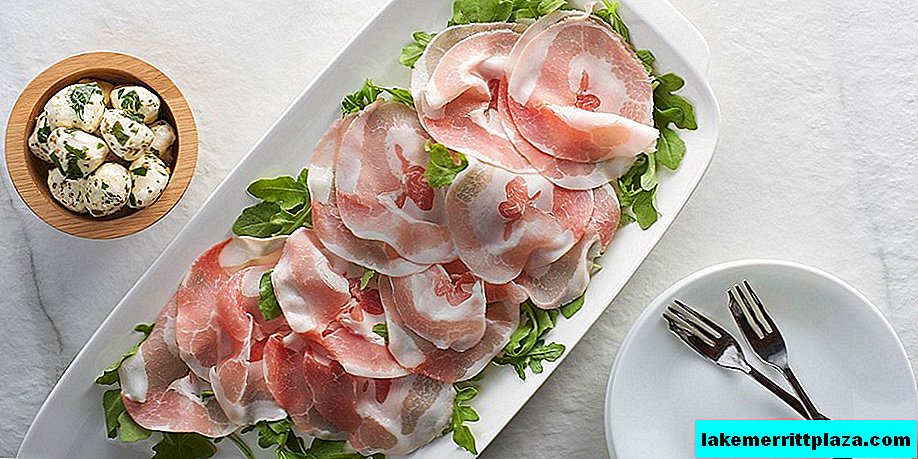
Pancetta, like many Italian products, is versatile in the kitchen. It is used both raw and used in a variety of recipes. At the same time, Tesu is often cut into cubes, Arrotolatu - in thin slices. The smoked version is perfect for sandwiches.
Pancetta is often used in cases where it is necessary to soften a too dry product when baking or frying. She wrap meat, fish, vegetables. More lean brisket varieties can serve as an alternative to beef or chicken. It gives a spicy taste to the main dishes, soups and stews.
Pachetta di Calabria is an indispensable component of Carbonara sauce. It is excellent in polenta, as well as in combination with crisp bread and cheese. Often it is used as an appetizer for Calabrian wine.
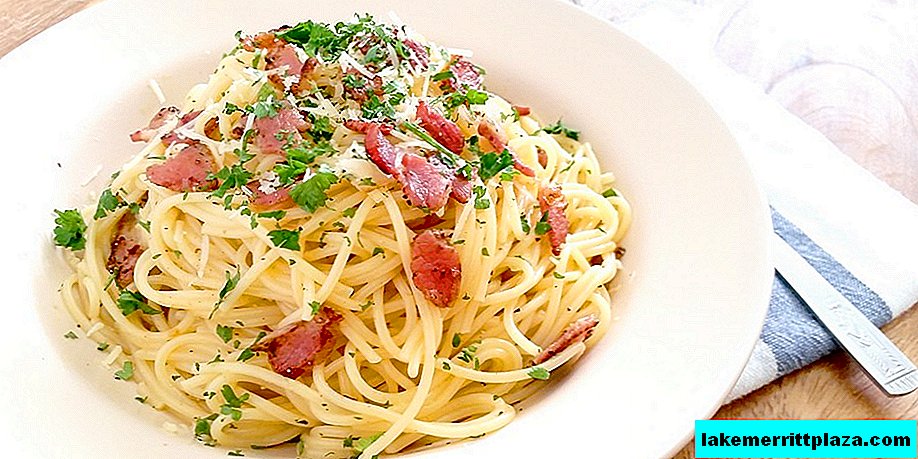
Pancetta Piacentina is often eaten raw. She is accompanied by stewed beans and cheese. It is indispensable for flavoring vegetable pies. It is added to pasta dishes, and soups are also sprinkled after grinding and roasting.
Of course, there are many salads with pancetta. We offer you an easy, but satisfying recipe.
Pancetta Salad
To prepare the Pancetta salad, you will need:
- Pancetta - 450 g;
- Mayonnaise - 180 ml;
- Milk - 60 ml;
- Dry ground garlic - 3 g;
- Chinese salad - 1 head;
- Large tomatoes - 2 pcs.;
- White bread crackers - 80 g;
- Salt, black pepper to taste.

At the first stage, carefully wash the lettuce and tomatoes and cut into medium pieces. From the pancetta we make small cubes and fry for several minutes until golden brown. Next, send mayonnaise, milk, garlic, salt and pepper to a blender and beat thoroughly.
In a salad bowl, mix vegetables with pancetta and season with sauce. Serve, garnished with crackers of white bread.
Calorie content and benefits
Pancetta - the food is quite fatty and high-calorie. It is rich in cholesterol and salt. 100 g of product contains 458 kcal, which are composed of:
- Proteins 11.6 g;
- Fats 45.04 g;
- Carbohydrates 0.66 g.
About 33% of the lipids in the brisket are saturated. At the same time, 100 g of delicacy contain about 68 mg of cholesterol. Therefore, the product is absolutely contraindicated for people with obesity, with high cholesterol in the blood, as well as with hypertension.
An attempt to reduce the calorie content of pancetta using grilling is questionable. Since, having removed part of the fat, we will saturate the product with dangerous benzapyrenes, which provoke the formation of cancer.

Not too rich in products with vitamins and mineral salts, so its use is more than just getting food pleasure. Servings of the brisket should be moderate and not often present in the diet.
Spending calories to a healthy middle-aged person who received from 50 g of eaten pancetta can be done by walking for an hour or a 20-minute swim.
Price in Italy and in Russia
The price of a pancetta in Italy depends on its variety, aging time and manufacturer. It ranges from 7.8 to 18.9 Euros per 1 kg of product.
In Russia, the so-called pancetta from a domestic producer is often found at a price of about 1000 rubles per 1 kg. An Italian product is a rarity for our counters. Its cost is about 2000 rubles per 1 kg.
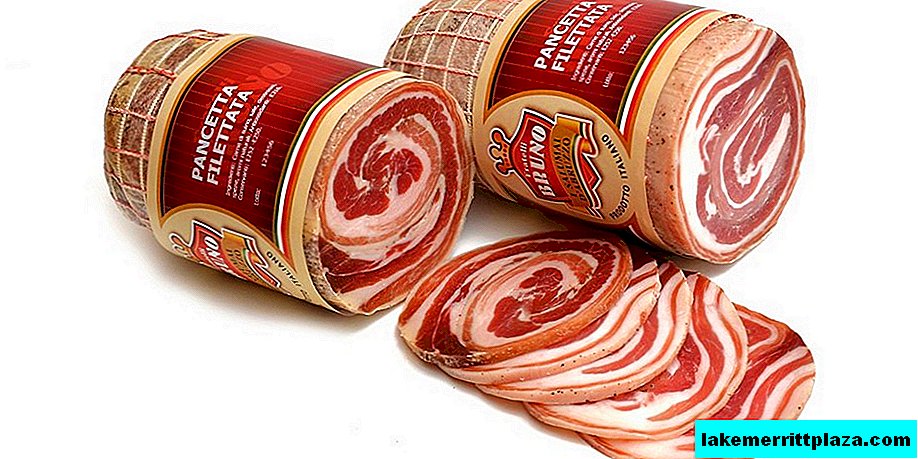
Long, short, but the story of Italian delicacy came to an end. And although the health benefits of the pancetta are not too great, but denying yourself the pleasure of trying this legendary product while traveling in Italy will be a huge mistake. Live right, joke briskly, travel emotionally and remember: "Pancetta is good in moderation!"





